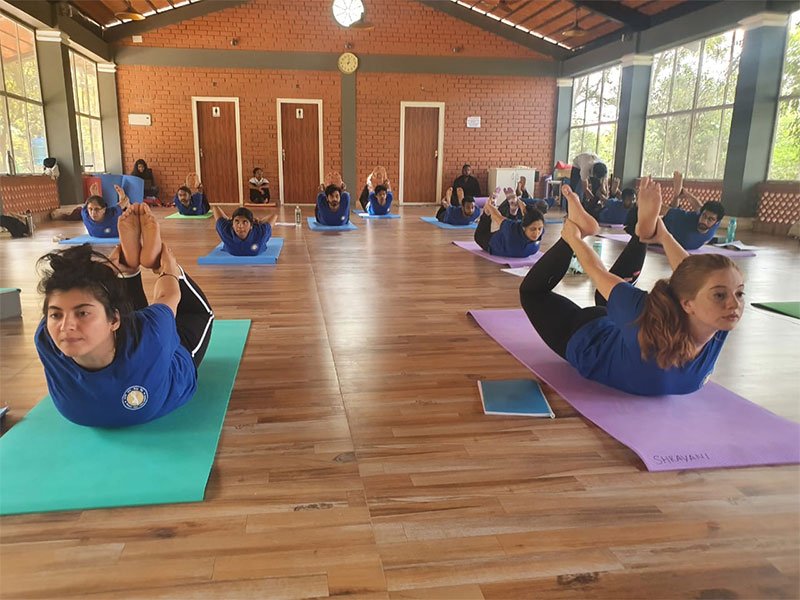To understand Yoga from the Upanishadic point of view, one needs to first understand the word “Brahmavidya”, and, of equal importance, how Yoga helps in this understanding. At the end of every chapter in the Bhagavad Gita, there is a shloka that clearly states that the preceding shlokas are a condensed, simplified essence of the Upanishads; and it is Brahmavidya, the study of the Brahman, and also Yoga Shastra, the Science of Yoga. All of this, presented in the form of a dialogue between Sri Krishna and Arjuna.
Iti Srimad Bhagavadgeetaasoopanishatsu Brahmavidyaayaam
Yogashaastre
The key points to be given careful attention to are Brahmavidya or the knowledge of Brahman, and Yoga Shastra. Both these streams of knowledge aim to understand the Brahman (referred to as the Purusha or Ishvara in Yoga Shastra); however, the Upanishads go to it through a theoretical approach, while the Yoga Shastras attempt to bring about a direct experience by following a systematic approach of the Science of Yoga.
Merely through Vedanta’s theoretical knowledge of the Brahman, one cannot become the Brahman, nor by mere repetition of the Mahavakyas such as “Aham Brahmasmi.” It can be brought about only through direct experience or Anubhava. For most people the mind in its ordinary state is not ready to grasp the meaning of Brahmavidya. The whole scope of any sadhana or Yoga is to expand the capacity of the mind to get a glimpse of what the all-pervading Brahman or Supreme Reality is.
The science of Yoga consists of eight Angas – limbs, starting with the practice of the Yama and Niyamas (observances and restraints), that explain the method of adopting a life of moderation. From there, it proceeds towards making one’s body healthy by the practice of Asanas. This enables one to sit comfortably for a length of time and fix one’s attention on the inner being. A healthy body is a prerequisite to perfecting one’s mind. Through the practice of Pranayama, one balances the Prana in the system and makes the mind steady. Pratyahara moves the mind towards one pointedness, and Dharana is fixing the mind on the point of focus which can be an object, a sound, a mantra or simply one’s breath. With regular practice, the mind starts becoming free from all distractions and moves towards Dhyana.
In that quietude when the mind is accustomed to this total awareness, it ceases to be an ordinary mind and moves to higher levels of consciousness. This mind is the Purusha or Ishvara itself and has infinite reach and joy. This state is called Samadhi, and is the last limb or the culmination of the Science of Yoga.
In the ongoing TTC5, Sri M explains Brahmavidya through the Yogic school of thought and asks the students to read “Yoga Sudhakara”, which is a commentary on the Yoga Sutras of Patanjali by Sri Sadashiva Brahmendra. This text looks at understanding the Brahman through the practice of Yoga.



